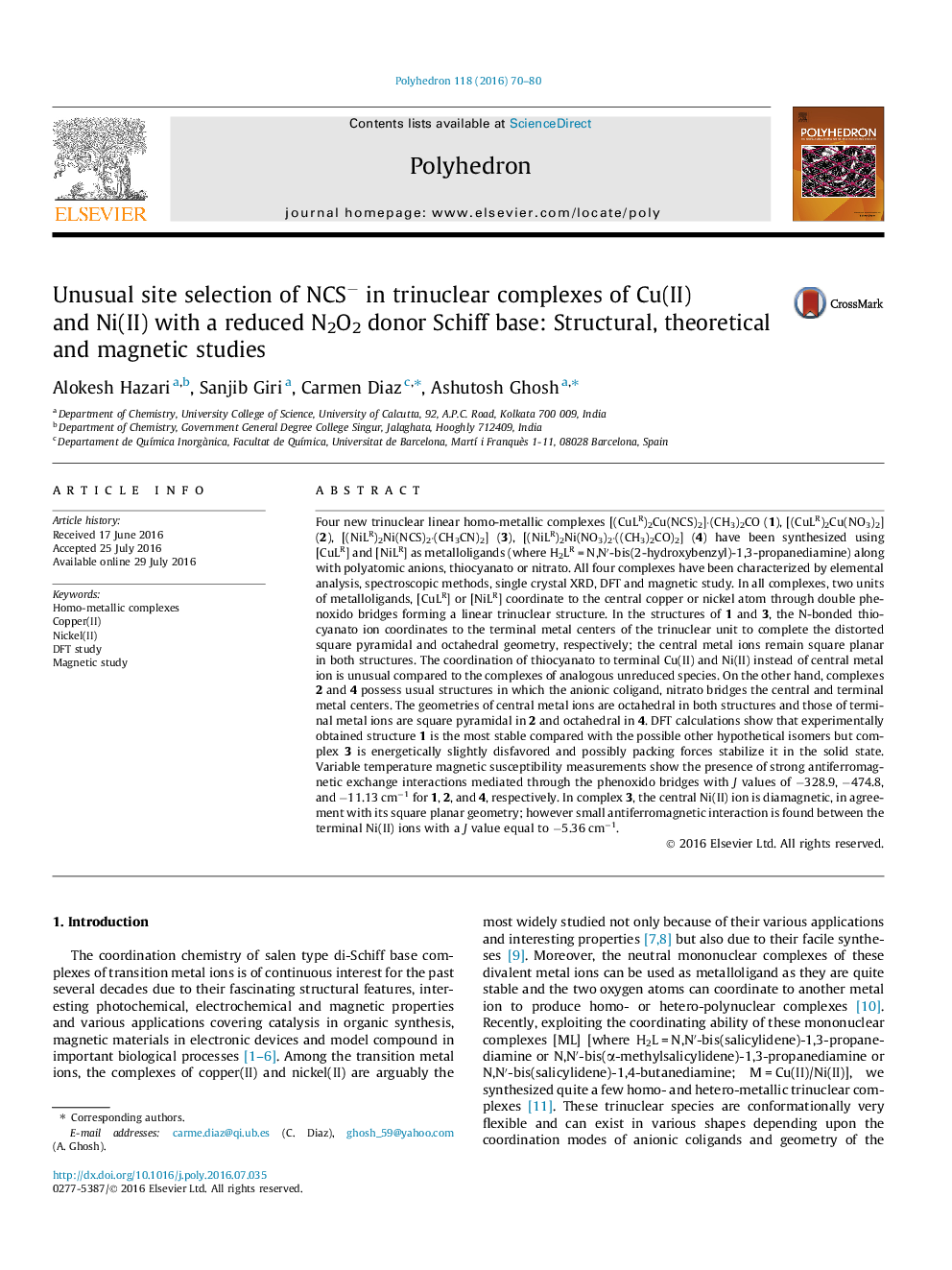| کد مقاله | کد نشریه | سال انتشار | مقاله انگلیسی | نسخه تمام متن |
|---|---|---|---|---|
| 1334220 | 1500222 | 2016 | 11 صفحه PDF | دانلود رایگان |

Four new trinuclear linear homo-metallic complexes [(CuLR)2Cu(NCS)2]·(CH3)2CO (1), [(CuLR)2Cu(NO3)2] (2), [(NiLR)2Ni(NCS)2·(CH3CN)2] (3), [(NiLR)2Ni(NO3)2·((CH3)2CO)2] (4) have been synthesized using [CuLR] and [NiLR] as metalloligands (where H2LR = N,N′-bis(2-hydroxybenzyl)-1,3-propanediamine) along with polyatomic anions, thiocyanato or nitrato. All four complexes have been characterized by elemental analysis, spectroscopic methods, single crystal XRD, DFT and magnetic study. In all complexes, two units of metalloligands, [CuLR] or [NiLR] coordinate to the central copper or nickel atom through double phenoxido bridges forming a linear trinuclear structure. In the structures of 1 and 3, the N-bonded thiocyanato ion coordinates to the terminal metal centers of the trinuclear unit to complete the distorted square pyramidal and octahedral geometry, respectively; the central metal ions remain square planar in both structures. The coordination of thiocyanato to terminal Cu(II) and Ni(II) instead of central metal ion is unusual compared to the complexes of analogous unreduced species. On the other hand, complexes 2 and 4 possess usual structures in which the anionic coligand, nitrato bridges the central and terminal metal centers. The geometries of central metal ions are octahedral in both structures and those of terminal metal ions are square pyramidal in 2 and octahedral in 4. DFT calculations show that experimentally obtained structure 1 is the most stable compared with the possible other hypothetical isomers but complex 3 is energetically slightly disfavored and possibly packing forces stabilize it in the solid state. Variable temperature magnetic susceptibility measurements show the presence of strong antiferromagnetic exchange interactions mediated through the phenoxido bridges with J values of −328.9, −474.8, and −11.13 cm−1 for 1, 2, and 4, respectively. In complex 3, the central Ni(II) ion is diamagnetic, in agreement with its square planar geometry; however small antiferromagnetic interaction is found between the terminal Ni(II) ions with a J value equal to −5.36 cm−1.
Graphical AbstractStructural analyses and DFT studies of four new homo-metallic compounds and other related species established that reduction of Schiff-base can alter the selection of the coordination site by the thiocyanate ion. Magnetic studies show antiferromagnetic interaction in three complexes.Figure optionsDownload as PowerPoint slide
Journal: Polyhedron - Volume 118, 4 November 2016, Pages 70–80